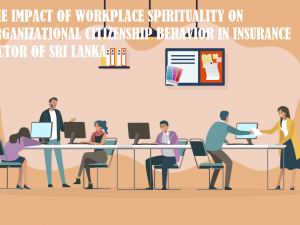| Table of Contents |
1 Chapter one
Introduction
1.1 Background of the study
1.2 Research problem identification
1.3 Statement of the problem
1.4 Research questions
1.5 Aim and objectives of the study
1.6 Outline of methodology
1.7 Significance of the study
1.8 Chapter outline
1.9 Research timeline
2 Chapter two
Literature review
2.1 Introduction
2.2 Workplace Stress
2.2.1 Definitions of workplace stress
2.3 Workplace stress of general employees
2.3.1 Classification of workplace stress
2.4 Models
2.5 Well-being of the members
2.6 Components of stress
2.6.1 Demand of work
2.6.2 Control
2.6.3 Job Role
2.6.4 Support
2.6.5 Change
2.6.6 Ways to cope up with stress
2.7 Employee Productivity
2.8 Types of measuring productivity
2.8.1 Labor productivity – based on the gross output
2.8.2 Capital productivity – based on the gross output
2.8.3 Capital –labor MFP based on value added
2.9 Job-stress and employee productivity
2.9.1 Impact of stress on employee productivity in the apparel sector
2.10 Conceptual Framework
2.11 Summary
3 CHAPTER THREE
METHODOLOGY
3.1 Introduction
3.2 Hypotheses Development
3.3 Operationalization
3.4 Research philosophy
3.5 Research approach
3.6 Research strategy
3.7 Time horizon
3.8 Data collection method
3.9 Population and sampling
3.10 Data analysis methods
3.10.1 Descriptive statistics
3.10.2 Inferential Statistics method
3.10.3 Method of Testing Reliability
3.12 Reliability and validity
3.12.1 Reliability
3.10.4 Pearson Correlation Analysis
3.10.5 Regression Analysis
3.11 Ethical considerations
3.12 Limitations of the study
4
Chapter 04
Data Analysis
4.1 Introduction
4.2 Reliability test
4.3 Analysis of the Demographic Variables
Descriptive Analysis
4.4 Pearson Correlation Analysis
4.5 Multiple Regression Analysis
4.6 Summary of Hypothesis Testing
4.7 Summary of Chapter
5
Chapter 05
Discussion
5.1 Introduction
5.1.1 Workplace Stress –Work Demand
5.1.2 Workplace Stress –Control
5.1.3 Workplace Stress- Support
5.1.4 Workplace Stress -Job Role
5.1.5 Workplace Stress –Change
5.1.6 Workplace stress and employee productivity
6
Chapter 06
Conclusion and Recommendation
6.1 Introduction
6.2 Conclusion
6.2.1 Objective I
6.2.2 Objective II
6.2.3 Objective III
6.2.4 Objective IV
6.3 Limitations, suggestions and future research directions
7 References
Appendices
Appendix I – Reflective Statement
Appendix IV – Sample Questionnaire
|
| Preview |
Introduction
1.1 Background of the study
According to Central Bank annual report (2021), apparel industry has been the biggest gross export earner of Sri Lanka since late 1980s and also contributes more than 52% country’s total export earnings. In global fashion industry, Sri Lanka has built reputation for labour practices which has created competitive advantage for apparel manufacturers in Sri Lanka to attract renowned global brands such as Adidas, Nike, Victoria’s Secret etc. (Central Bank Annual Report, 2021). These renowned global brands highly concentrate to keep its entire value chain free from unethical, unsustainable or illegal practices.
As per the Harvard Business Review (2022), it has been done a survey to identify the reason to make employees productive at the workplace. The figure 01 shows the details of that survey.
Workers of garment industry need to achieve tight production targets to supply larger number of customer orders. Thus, employees of apparel sector need to maintain higher efficiency all the time and it leads to increasing job stress level (Ubayachandra, 2011). Employees’ wellbeing and their performance are the two different aspects that companies need to highly concern to ensure the balance of two aspects.
Covid-19 pandemic also caused to increase employees’ stress level. Sri Lankan government ordered garment factories remain open when country was going through strict lockdown (Human Right Watch, 2021). Workers of apparel sector worked in highly vulnerable environment and garment factories have hit repeated outbreaks in 2020 and 2021 (Human Right Watch, 2021).
On the other hand, maintaining attractive labour practices is a key factor that need to retain and attract customers in global apparel market (Odio, Walker & Kim, 2013). Thus, maintaining employees’ welfare, wellbeing and providing better working conditions and environments have become the highly significant aspect of the apparel industry.
1.2 Research problem identification
Human resource practices of apparel manufacturing companies in Sri Lanka have identified that considerable percentage of workers in factories are overloaded with works and exhausted with lengthy working hours. Many workers in factories have raised concerns that they have been struggled with mental health problems as a results of heavy workload and high pressure working environment (Arsakularathen & Perera, 2017). Therefore, they face difficulties to manage work-life balance. Achieving the targets have been challenged for them since fail to handle multiple targets and unable to prioritize the work. This leads to high employee turnover of apparel manufacturing companies and selection, recruitment and training cost of the apparel companies have increased in significant level (Jamaldeen & Ekanayaka, 2015). Employee turnover is a significant issue in apparel sector in Sri Lanka. Companies experience the absenteeism of sewing machine operators after the long holidays without any prior notice. This also could be a result of work stress and high pressure working environment of factories. In that situation, companies face huge challenge to plan out production flows to complete orders on time with the predefined quality conditions. Losing the experience employees is huge concern for apparel manufacturing companies and considerable amount of funds should be allocated to new recruitments and training (Odio, Walker & Kim, 2013).
The figure 02 shows the results of survey conducted by SHRM organization in 2022 to investigate the employee turnover and productivity of employees based on the industry.
According to Arsakularathnna and Perera (2017), this is a concern in other developing countries such as India, Europe and Bangladesh which have strong appeal manufacturing industry. Even in other countries like India and Bangladesh, overall work stress of employees in apparel manufacturing industry is considerably high (Arsakularathen & Perera, 2017). This negatively affects their mental and physical health and also their productively which eventually affect the overall performance of the company.
Therefore, it is highly important to take actions to manage employees’ stress level within healthy level to keep employees’ job satisfaction level at higher level and employee turnover at lower level. Further, as mentioned before, maintaining sustainable labour practices and adhere to concept of ‘Garment without guilt’ gain huge competitive advantage in global fashion industry (Kalegama, 2005). This expresses the significant of evaluating the job stress of employees in the apparel manufacturing sector and how its impact over their productively.
1.3 Statement of the problem
The key purpose of this research is to evaluate the impact of workplace stress management on employees’ productivity in apparel manufacturing sector in Sri Lanka.
Does workplace stress management have an impact on employees’ productivity in apparel manufacturing sector of Sri Lanka?
1.4 Research questions
What are the key factors that are increasing to increase employees’ workplace stress level in apparel manufacturing sector in Sri Lanka?
What is the relationship between workplace stress and employees’ productivity in apparel manufacturing sector in Sri Lanka?
What are the actions need to be taken to keep employees’ workplace stress in acceptable level?
1.5 Aim and objectives of the study
The main aim of the study is to identify the impact of workplace stress management on employees’ productivity regarding the apparel manufacturing sector in Sri Lanka. Considering the scope of the research, following objectives are set,
To identify the factor which cause to workplace stress of employees in the apparel manufacturing sector in Sri Lanka.
To identify the impact of workplace stress on employees’ productivity in the apparel manufacturing sector in Sri Lanka.
To identify the challenges faced by the factory and industry.
To provide recommendations to maintain workplace stress within the acceptable level and to improve the employees’ productivity in the apparel manufacturing sector in Sri Lanka.
1.6 Outline of methodology
Considering research methodology, this is a quantitative research which comes to conclusion based on quantitative data (Sekaran & Bougie, 2015). Research philosophy of the study is positivism. In positivism philosophy, researcher conducts the study as an objective analysist who is limited to collect and interpret data in an objective way (Saunders et al. 2012). Deductive approach is used as research approach which means hypotheses are developed based on exiting literature and then research strategy is designed to test hypotheses (Wilson, 2011). Self-administrated, structured survey is used to collect from respondents through.
1.7 Significance of the study
Here, it is focused to explain the theoretical and practical significance of the research which analyzes the work stress of employees in apparel manufacturing sector and its impact on employees’ productivity. Findings of this research will be contributed to enhance the productivity of employees and working environment of the companies in apparel manufacturing sector. Specially, the recommendations of this will be useful to upgrade the existing HR policies and practices of apparel sector. According to Shukla and Garge (2013), 45% of participants have responded that main reason for work stress is inability to achieve the given targets. Further, according to research conducted by Dhankar (2015), another main factor which contributes to work stress of apparel sector employees is overload of responsibilities.
Even though, there can be found number of research papers conducted in regards the impact of work stress on employee performance in international level, not enough research were conducted in Sri Lankan context which is one of leading garment manufacturing country. Some of the researches conducted in Sri Lanka on this matter have focused on other sectors such as banking, education etc. Further, many researches does not focus on specifically on employees’ productivity.
Studies conducted by academics like Arsakularathna and Perera (2017) and Jamaldeen and Ekanayake (2015) have partially filled this knowledge gap. While Jamaldeen and Ekanayake (2015) focused on the relationship between job stress and employee satisfaction levels, Arsakularathna and Perera's research paper (2017) focused on the factors that influence the job stress of IT-related personnel in the textile business. Furhter, Nanayakkara and Chandrika (2018), conducted a study in which they specifically focused on the machine operators in Sri Lanka's apparel industry to examine the impact of job stress on employee attrition.
This situation demonstrate the significant knowledge gap in the analysis of the variables influencing employee productivity in Sri Lanka's apparel manufacturing industry. Even though, many academics have focused to evaluate the correlation between the work stress and employee satisfaction level, the attention that has been paid to evaluate the impact of work stress on the employees’ productivity in apparel manufacturing sector is relatively low in Sri Lanka. Thus, finding this connection is considered to be essential because numerous academics have found a strong connection between job stress and staff turnover rates across a variety of industries (Kishori & Vinothni, 2016).
This research project hopes to produce insightful information that will help the Sri Lankan apparel industry's processes for identifying and managing stress be improved, which would enable management of such businesses to maximize staff productivity. This will be also useful to minimize the employee turnover in the industry. In this scenario, it is anticipated that this study will help policymakers create methods for efficiently managing employee job stress levels while taking into account a variety of demographic aspects. This is important for Sri Lankan apparel manufacturing businesses since it would guarantee sustainable labor practices for workers, which has evolved into one of the top requirements of global fashion brands. Therefore, the management of Sri Lankan garment manufacturing enterprises would be able to make use of the study's findings in order to develop and further improve their competitive position in the global market. The findings from this study could also be used by different government organizations to safeguard and guarantee the sustainability of the Sri Lankan apparel sector (Odio, Walker & Kim, 2013).
1.8 Chapter outline
• Chapter 01 – Introduction
Chapter 1 has mostly focused on identifying and analyzing the key issues found within the study area and their relationship to the study's research objectives. Additionally, the scope of the proposed study, its theoretical and practical significance, and its main expected results are described in this chapter.
• Chapter 2 – Literature review
The main focus of Chapter 2 is on analyzing previous research studies conducted by various academics in order to identify the literature that is currently available in the area of interest, as well as on identifying the main theories and concepts related to the research topic and the findings of such earlier research studies.
• Chapter 3 – Research Methodology
The success and accuracy of the proposed research study depend on the precise selection and effective implementation of the best research methodologies. The main focus of chapter 3 of this research study is on identifying and analyzing the important tactics used to conduct the study. This chapter will cover the tools and methods used to comprehend and produce the main research insights.
• Chapter 4 – Data Presentation and analysis
The study's Chapter 4 primarily focuses on analyzing the data gathered in accordance with the major research objectives. One of the main factors that affects the total success rate is the researcher's capacity to effectively analyze the gathered data using the best and most relevant tools and techniques in order to realize accurate research outputs and insights.
• Chapter 5 – Conclusion and recommendation
The main objectives of Chapter 5 of the study are to convey the research's conclusions logically and to compare and contrast them with earlier research studies conducted by other academics and researchers. The researcher would be able to confirm that the outcomes of the study were accurate, rational, and relatable by comparing the results. The necessary recommendations will also be made under this chapter based on the research findings.
|





